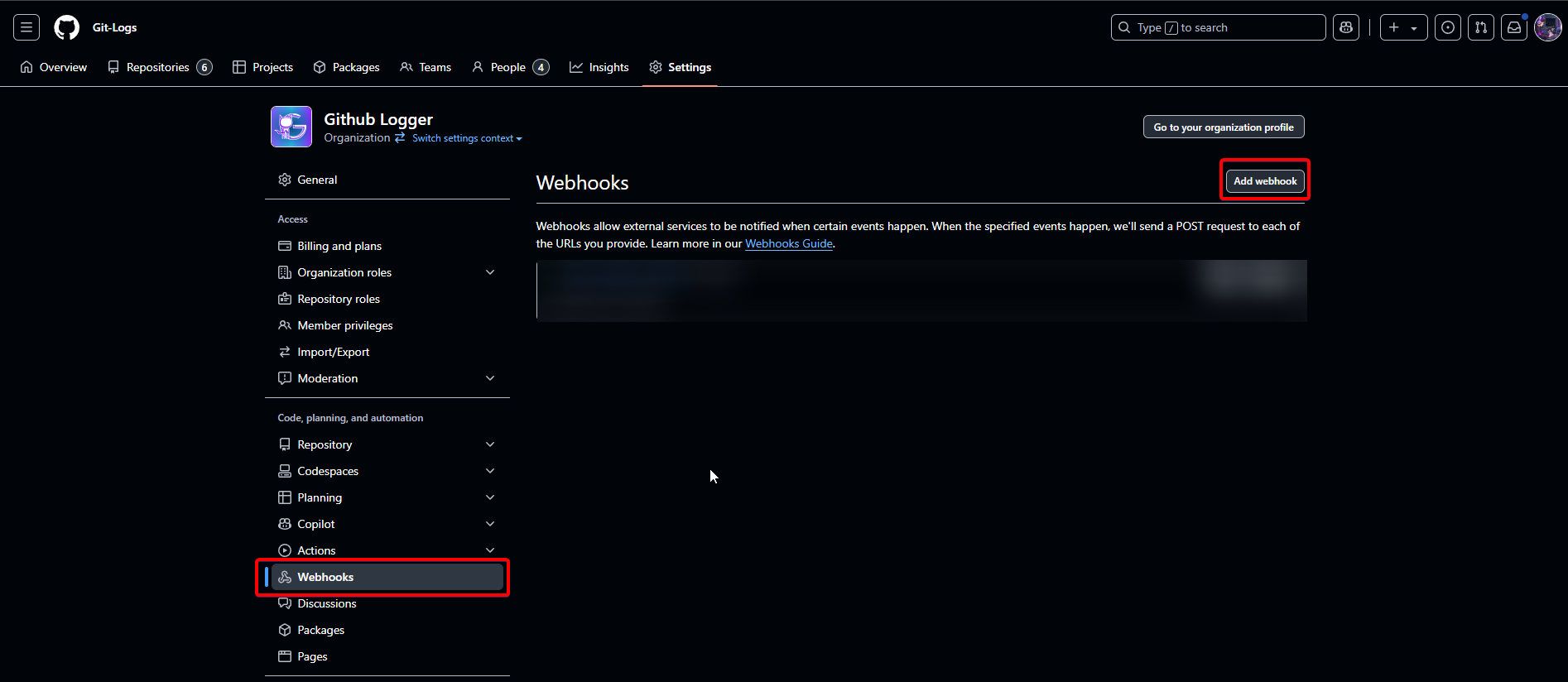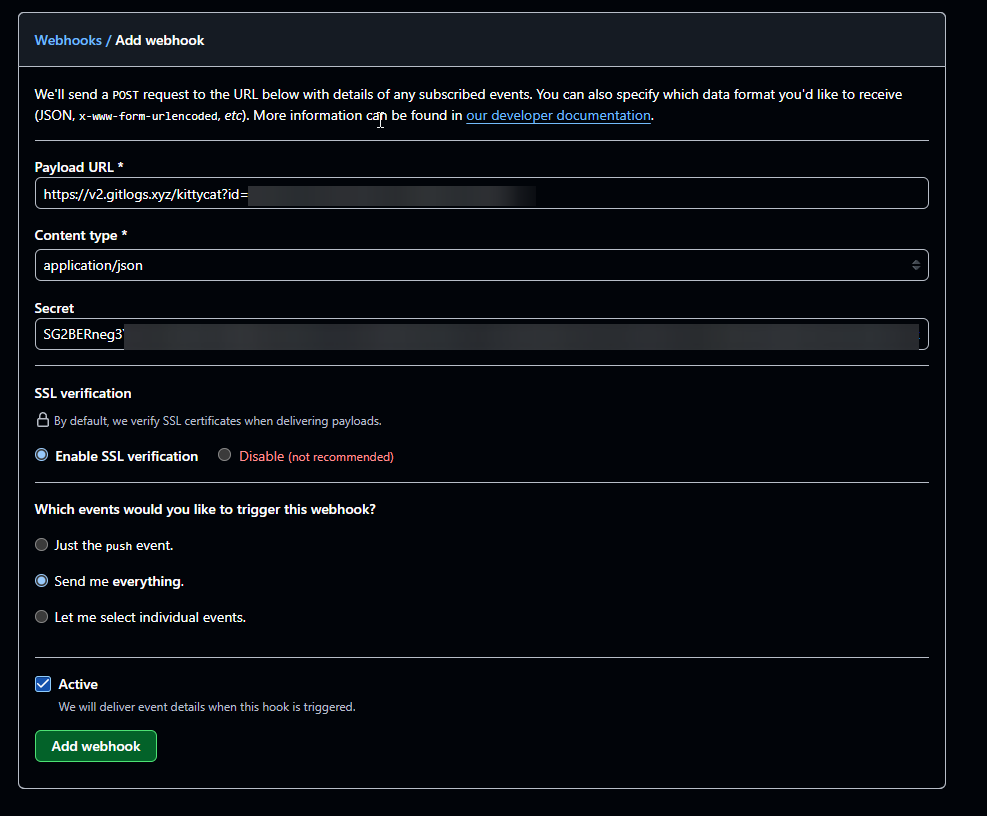Use Your Webhook
To set up webhook events for your GitHub Repository or Organization, please follow the steps below. You will first need to create a webhook and payload URL using Git Logs. See [here](/docs/setup/create-webhook) for details.
Important Info
Webhooks can be set up for either a Repository or an Organization. Adding webhooks to an organization is more seamless in most cases. We recommend setting them up for the entire org when and where possible! Steps are the same for both.
Step 1: Navigate to your Repository/Organization
Go to the GitHub repository or organization where you want to set up the webhook.
Step 2: Open the Repository Settings
Click on the "Settings" tab in the repository menu.

Step 3: Open Webhook Settings
Select the "Webhooks" tab from the left sidebar of the settings page and then click on the Add webhook button.

Step 4: Add your Webhook
In the Add webhook page/tab, you want to fill out the form with the information provided to you by Git Logs. Here is an example of the required information:
- Payload URL:
https://v2.gitlogs.xyz/kittycat?id=WEBHOOK_ID - Content type:
application/json(this will never change) - Secret: should match the secret provided to you by Git Logs
- SSL verification: you can enable or disable this as you see fit
- Which events: this option is also entirely up to you. If you choose "send me everything," we can blacklist events you don't want to see.


Step 5: Monitor your Repo
Once you have completed all the steps above, you are ready to run the /newrepo command in the bot. This command will link your repository to your webhook and allow you to monitor webhook events such as Pull Requests, Deployments, and more. The command params should be filled out like so:
Command Params
| Prop | Type | Default |
|---|---|---|
webhook_id | string | - |
owner | string | - |
name | string | - |
channel | string | - |
Param Details
webhook_id: your webhook ID provided to you by Git Logsowner: your GitHub user/organization name (ex: Git-Logs)name: your repository name (ex: Documentation)channel: the Discord channel to send events to

Additional Information
- Repository/Organization: Ensure you have the necessary permissions to add webhooks to the selected repository or organization.
- Webhook Information: Double-check the webhook URL, secret, and selected events to ensure they are correct.
- Troubleshooting: If you encounter any issues during the webhook setup process, please refer to our support server for assistance.
By following these steps, you will successfully set up and use your webhook with GitHub, allowing you to receive notifications and manage your repositories more efficiently.
Last updated on